Abstract
1. The secretion rate of bicarbonate by the isolated saline-perfused cat pancreas was linearly related to the bicarbonate concentration of the arterial inflow at constant PCO2 and at high volume rates of secretion. 2. Pancreatic bicarbonate secretion was independent of arterial inflow pH at constant bicarbonate concentrations when the pH was manipulated by alterations in the PCO2 at high volume rates of secretion. 3. A small but statistically significant linear relationship existed between the pH of the arterial inflow and bicarbonate secretion at constant PCO2 after inhibition of carbonic anhydrase by acetazolamide. Under the same conditions no relationship was found between bicarbonate secretion and arterial inflow pH when the perfusate bicarbonate concentration was kept constant and the PCO2 varied. 4. When the volume rate of secretion was reduced by about 60-70% of maximum no relationship was found to exist between arterial inflow pH and bicarbonate secretion at constant bicarbonate concentration in the perfusate. There was also no relationship between inflow pH and bicarbonate secretion at constant PCO2 down to a pH of 7.3 until the bicarbonate concentration of the perfusate was reduced below 10 mM, when the secretion rate fell off rapidly. 5. A linear relationship was found to exist between the volume rate of secretion and the PCO2 of the pancreatic juice and the output of lactate both in the isolated saline-perfused gland and the blood-perfused pancreas in situ. 6. At high rates of secretion the PCO2 of the pancreatic juice was always higher than that of either the arterial inflow or the venous outflow. There is therefore no gradient for the passive movement of carbon dioxide between the arterial inflow and the pancreatic juice. 7. Inhibition of secretion with acetazolamide caused a fall in the PCO2 of pancreatic juice and increased the output of lactate. The secretion of lactate was not due to hypoxia as it also occurred in the blood-perfused gland in situ which had normal haemoglobin concentrations and oxygen saturation. 8. It is concluded that the secretion of bicarbonate is independent of arterial pH but critically dependent upon the arterial concentration of the bicarbonate ion. These experiments do not support the concept that the secretion of protons over the basolateral membrane is the major primary event in pancreatic secretion of bicarbonate.
Full text
PDF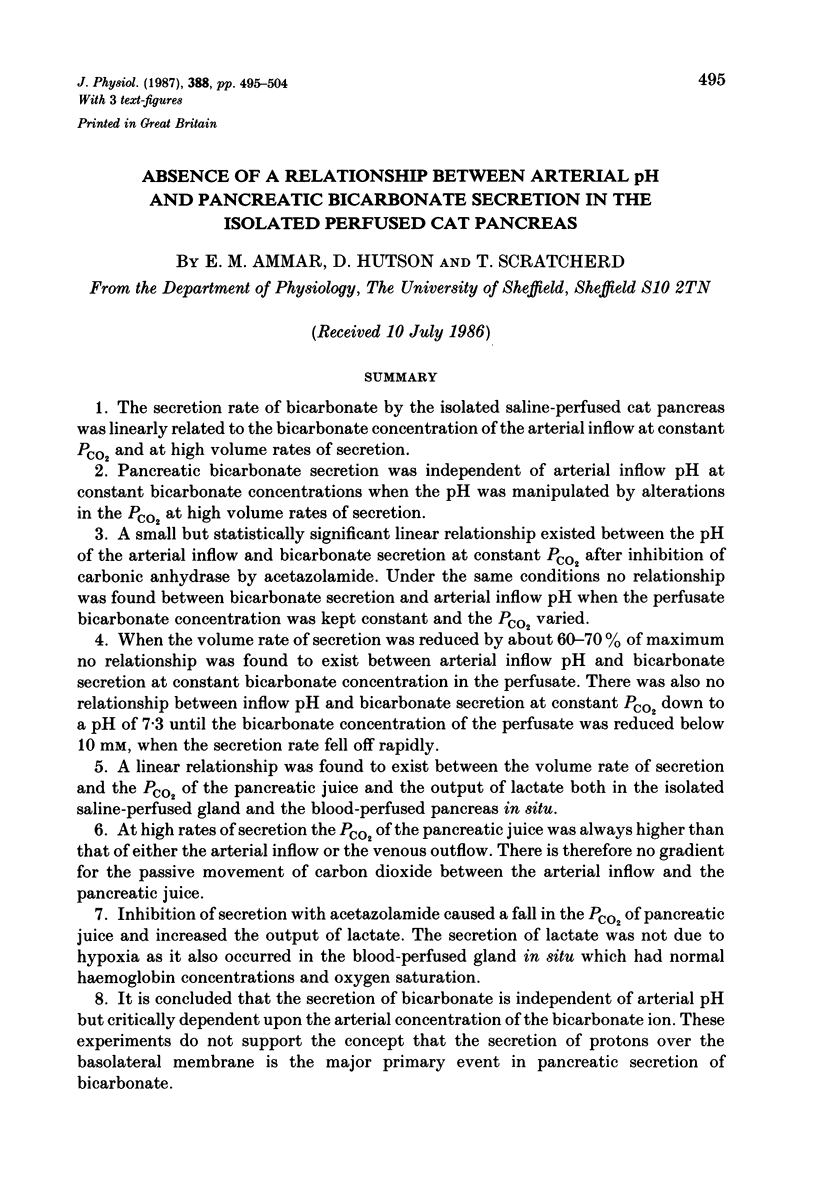
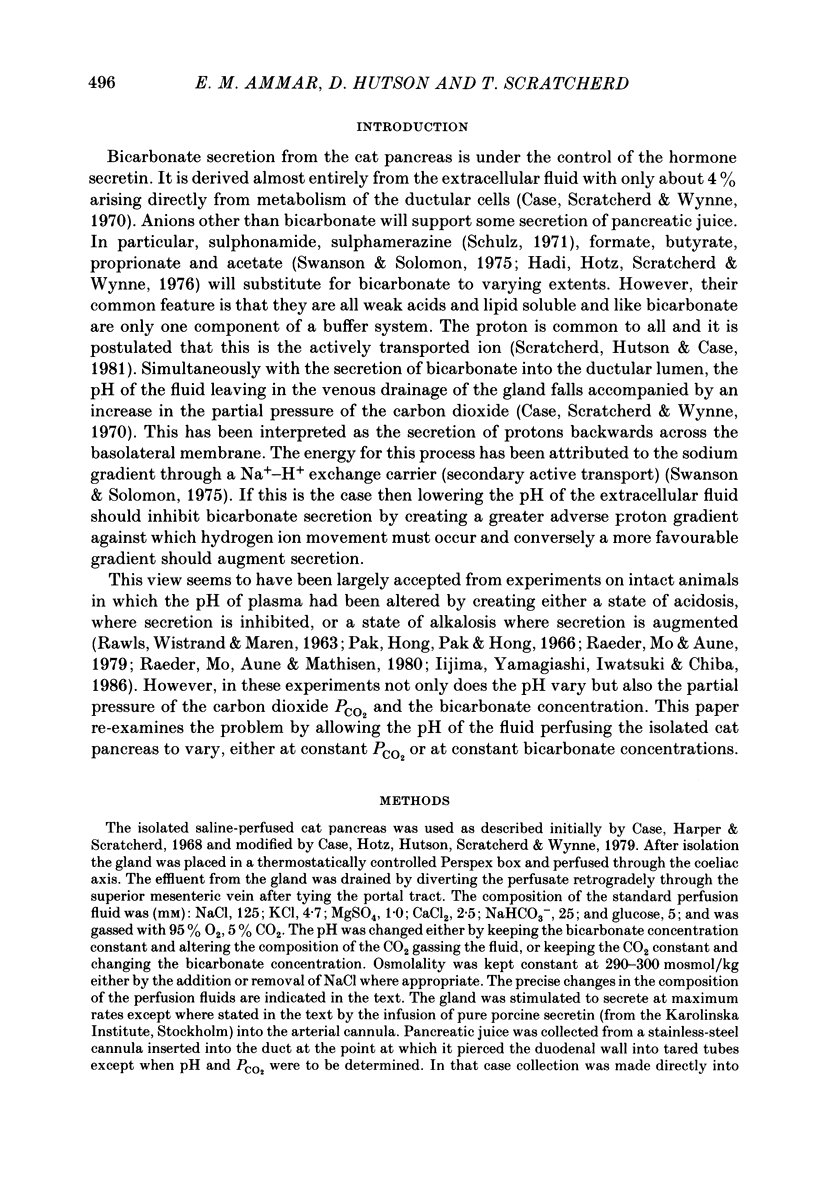
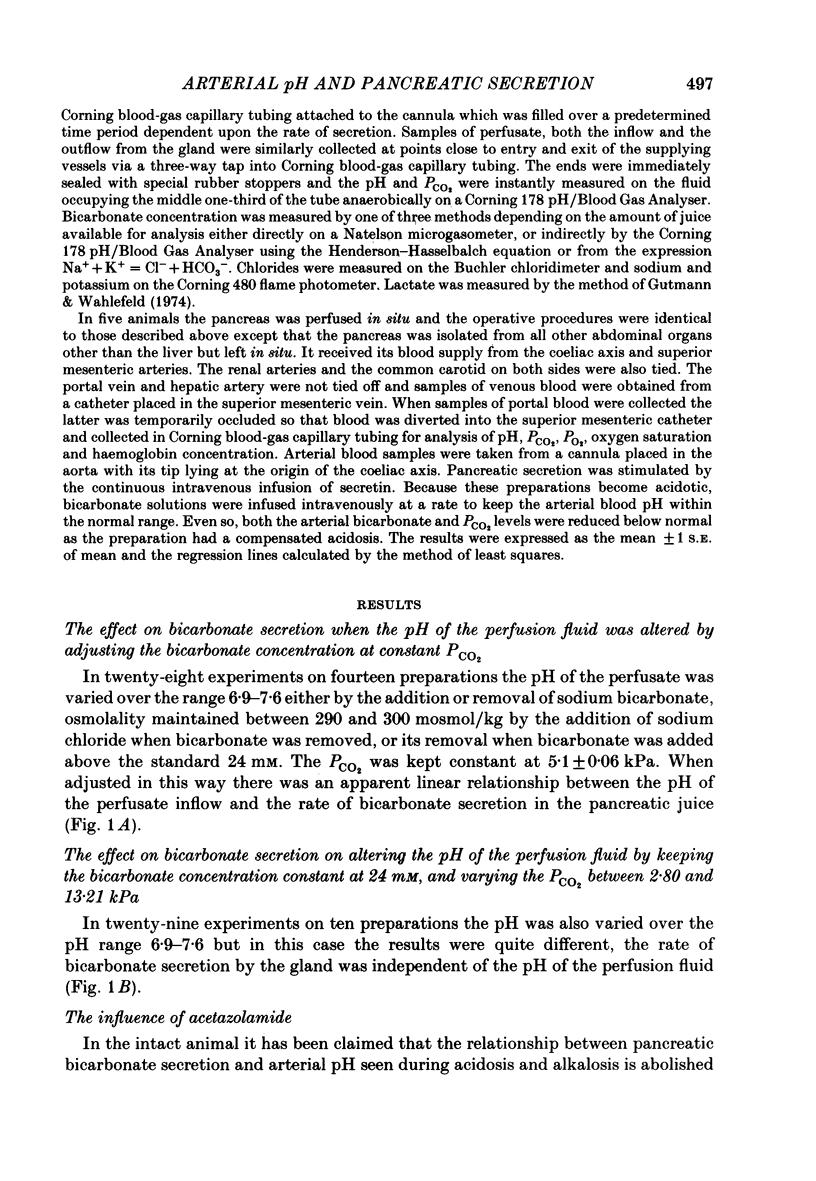
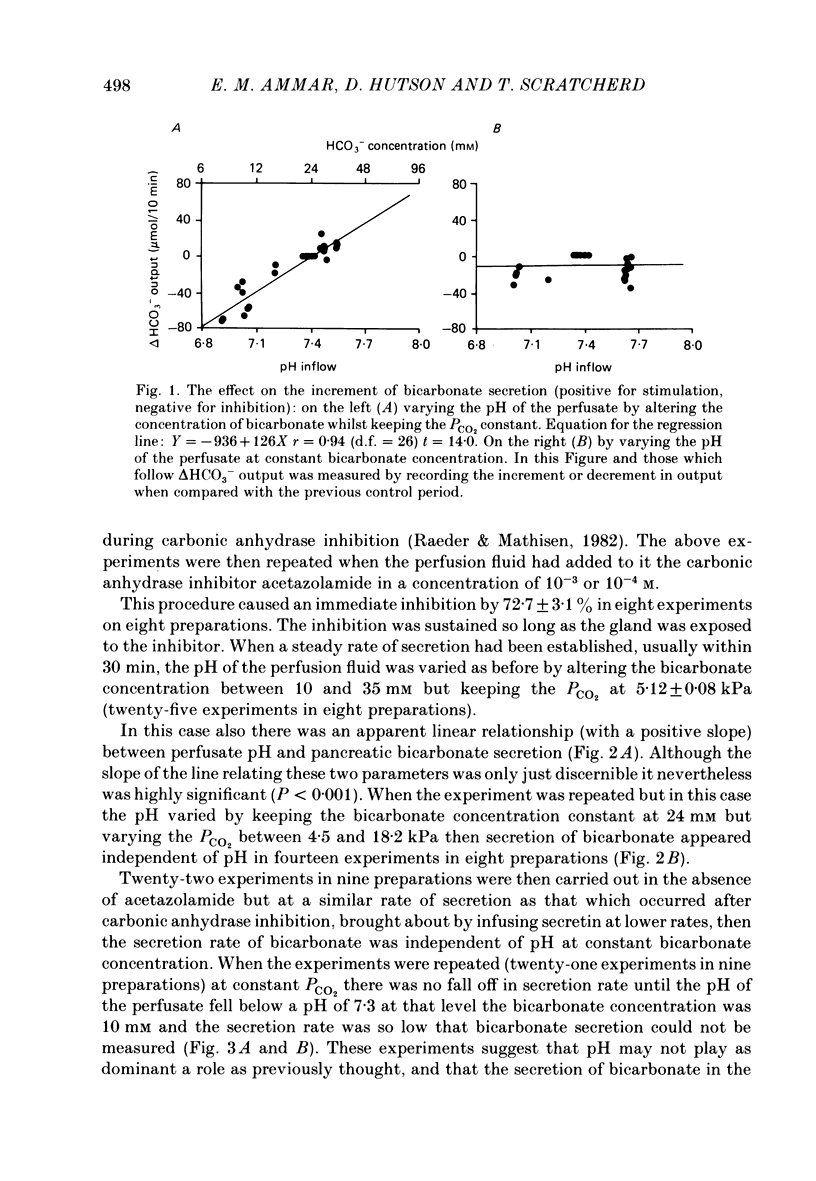
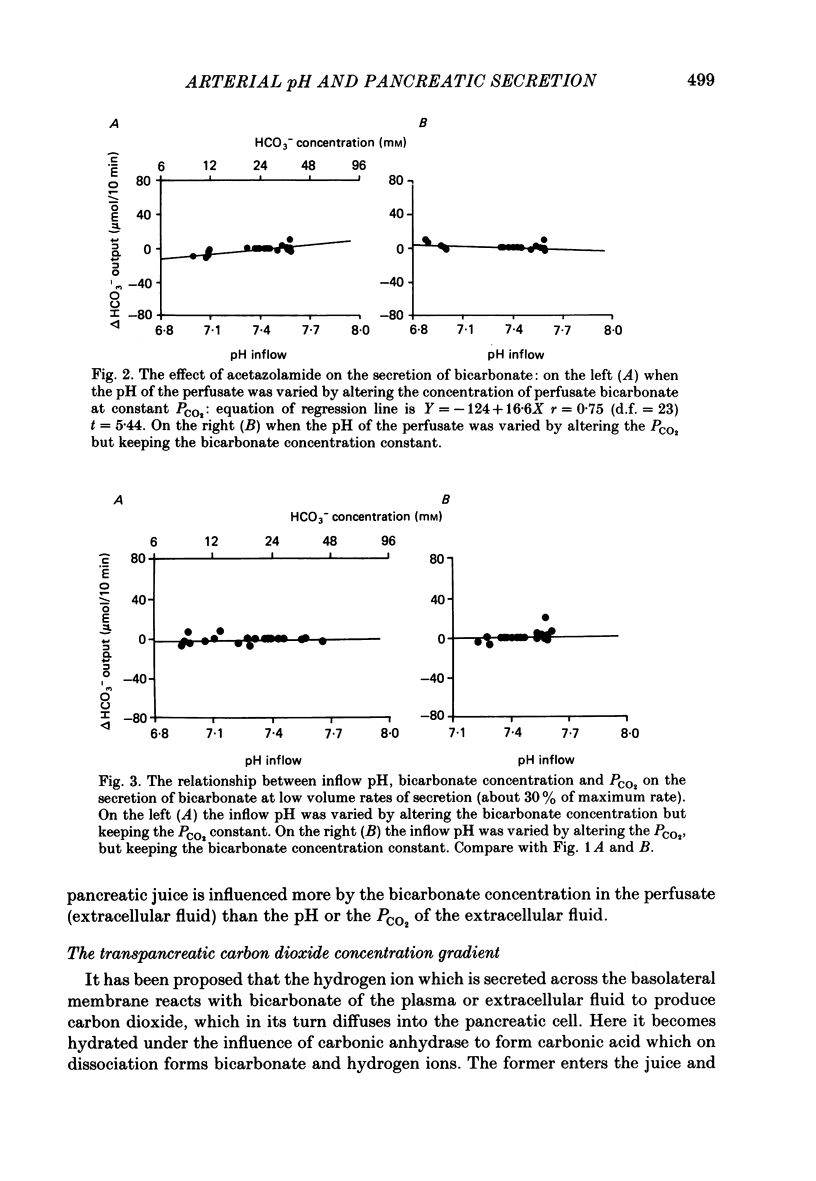

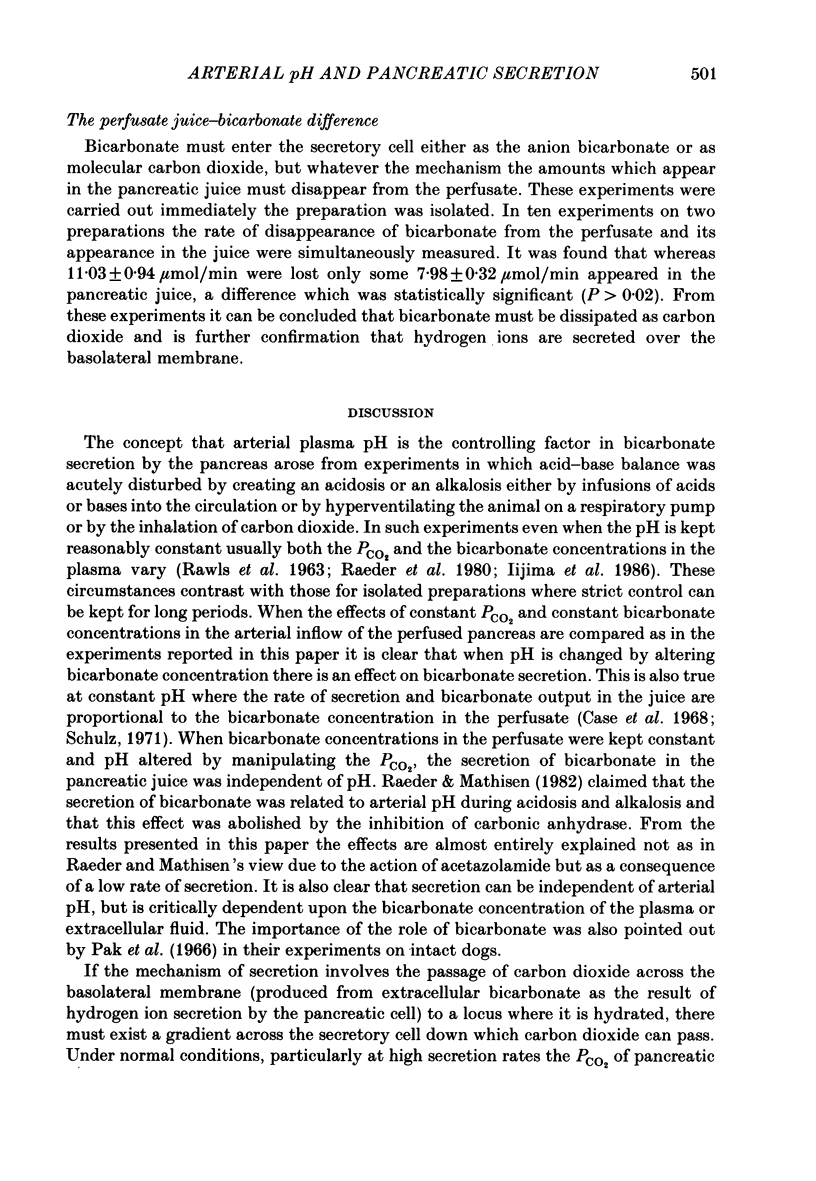
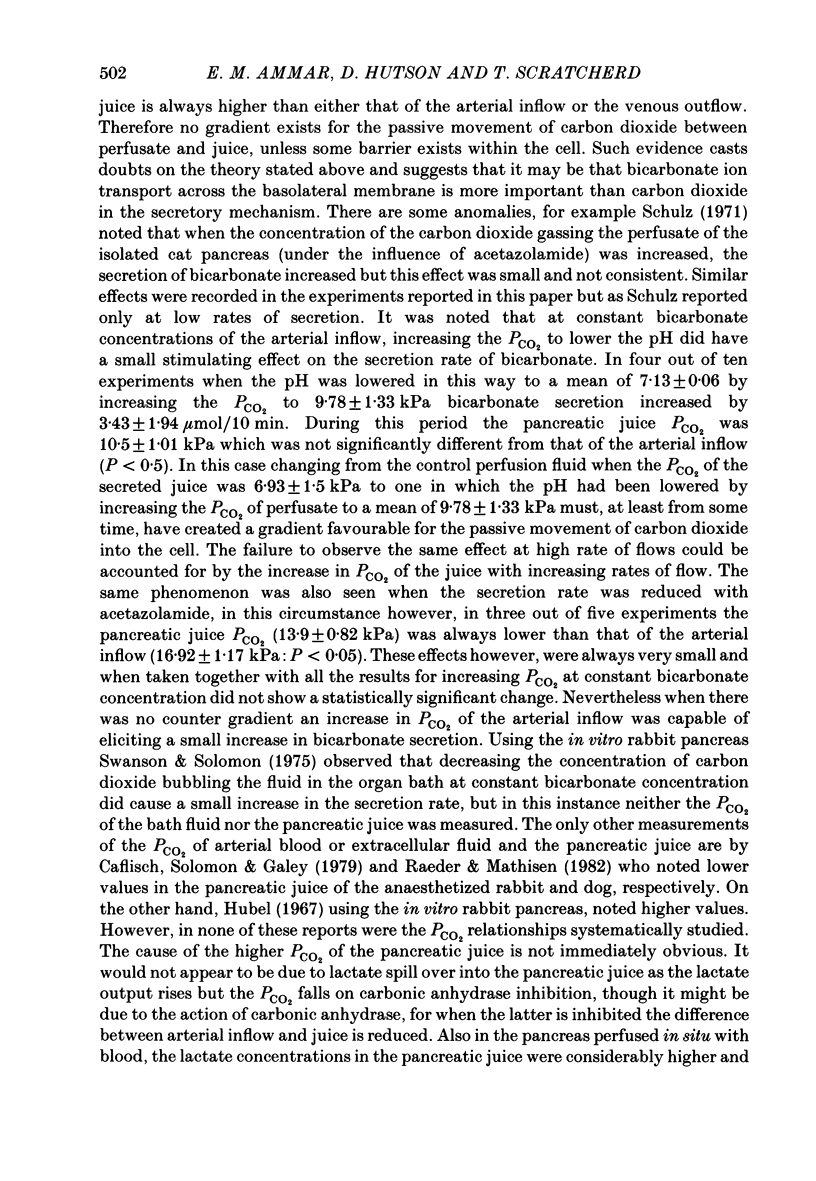
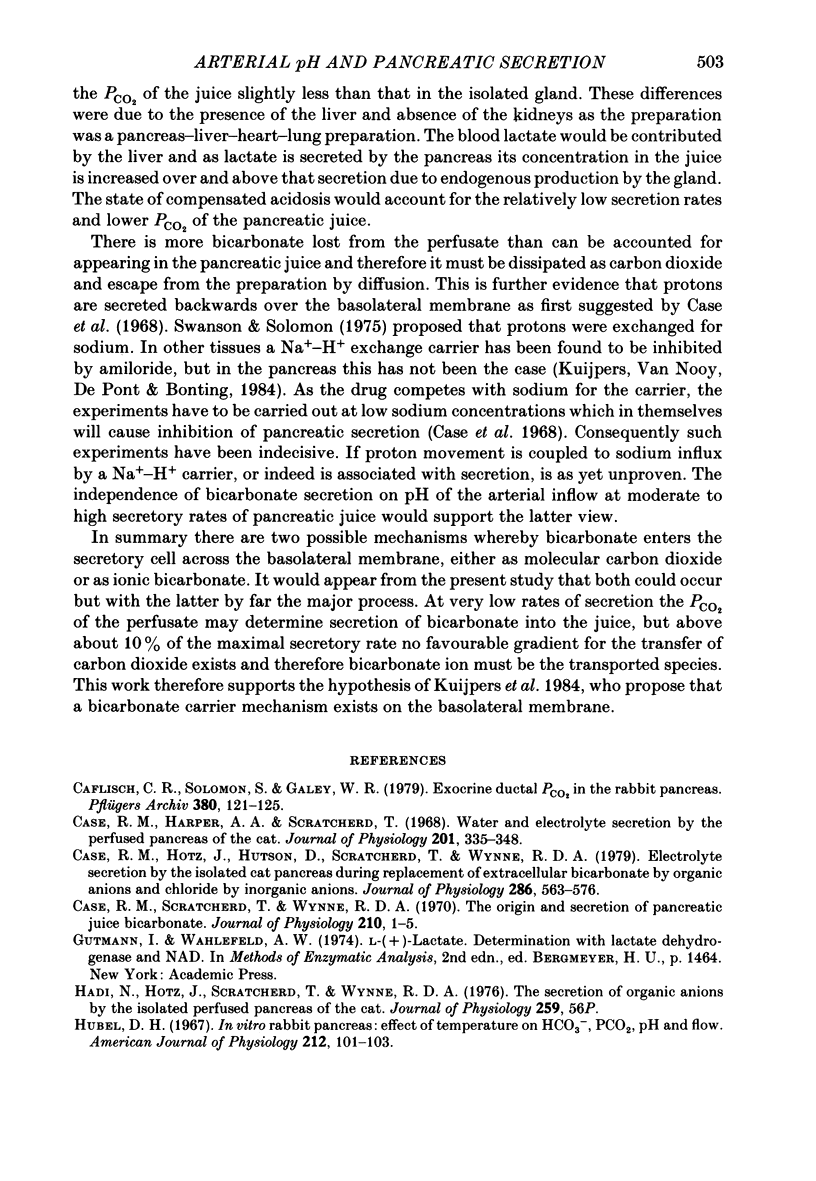
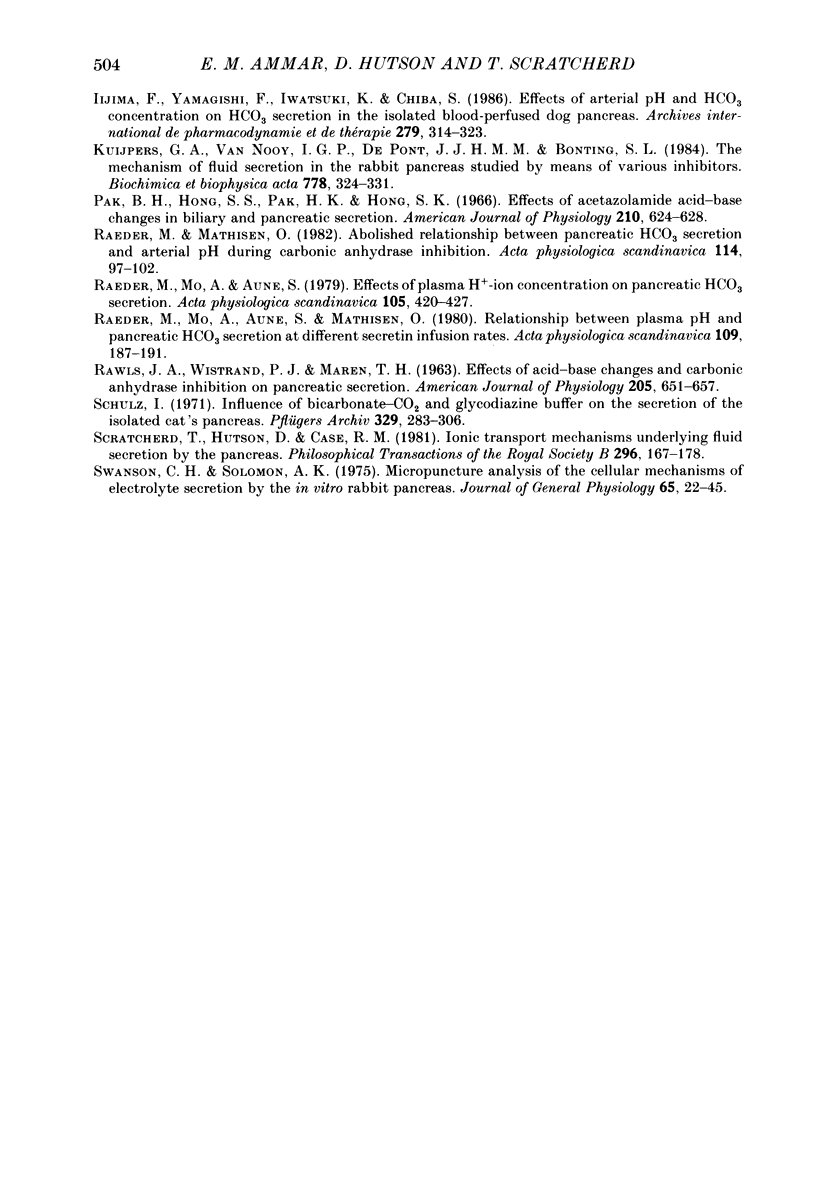
Selected References
These references are in PubMed. This may not be the complete list of references from this article.
- Caflisch C. R., Solomon S., Galey W. R. Exocrine ductal pCO2 in the rabbit pancreas. Pflugers Arch. 1979 Jun 12;380(2):121–125. doi: 10.1007/BF00582146. [DOI] [PubMed] [Google Scholar]
- Case R. M., Harper A. A., Scratcherd T. The secretion of electrolytes and enzymes by the pancreas of the anaesthetized cat. J Physiol. 1969 Apr;201(2):335–348. doi: 10.1113/jphysiol.1969.sp008759. [DOI] [PMC free article] [PubMed] [Google Scholar]
- Case R. M., Hotz J., Hutson D., Scratcherd T., Wynne R. D. Electrolyte secretion by the isolated cat pancreas during replacement of extracellular bicarbonate by organic anions and chloride by inorganic anions. J Physiol. 1979 Jan;286:563–576. doi: 10.1113/jphysiol.1979.sp012637. [DOI] [PMC free article] [PubMed] [Google Scholar]
- Case R. M., Scratcherd T., Wynne R. D. The origin and secretion of pancreatic juice bicarbonate. J Physiol. 1970 Sep;210(1):1–15. doi: 10.1113/jphysiol.1970.sp009193. [DOI] [PMC free article] [PubMed] [Google Scholar]
- Hadi N., Hotz J., Scratcherd T., Wynne R. D. Proceedings: The secretion or organic anions by the isolated perfused pancreas of the cat. J Physiol. 1976 Jul;259(1):56P–56P. [PubMed] [Google Scholar]
- Hubel K. A. In vitro rabbit pancreas: effect of temperature on HCO-3, PCO-2, pH, and flow. Am J Physiol. 1967 Jan;212(1):101–103. doi: 10.1152/ajplegacy.1967.212.1.101. [DOI] [PubMed] [Google Scholar]
- Iijima F., Yamagishi F., Iwatsuki K., Chiba S. Effects of arterial pH and HCO-3 concentration on HCO-3 secretion in the isolated blood-perfused dog pancreas. Arch Int Pharmacodyn Ther. 1986 Feb;279(2):314–323. [PubMed] [Google Scholar]
- Kuijpers G. A., Van Nooy I. G., De Pont J. J., Bonting S. L. The mechanism of fluid secretion in the rabbit pancreas studied by means of various inhibitors. Biochim Biophys Acta. 1984 Dec 5;778(2):324–331. doi: 10.1016/0005-2736(84)90376-6. [DOI] [PubMed] [Google Scholar]
- Pak B. H., Hong S. S., Pak H. K., Hong S. K. Effects of acetazolamide and acid-base changes on biliary and pancreatic secretion. Am J Physiol. 1966 Mar;210(3):624–628. doi: 10.1152/ajplegacy.1966.210.3.624. [DOI] [PubMed] [Google Scholar]
- RAWLS J. A., Jr, WISTRAND P. J., MAREN T. H. EFFECTS OF ACID-BASE CHANGES AND CARBONIC ANHYDRASE INHIBITION ON PANCREATIC SECRETION. Am J Physiol. 1963 Oct;205:651–657. doi: 10.1152/ajplegacy.1963.205.4.651. [DOI] [PubMed] [Google Scholar]
- Raeder M., Mathisen O. Abolished relationship between pancreatic HCO-3 secretion and arterial pH during carbonic anhydrase inhibition. Acta Physiol Scand. 1982 Jan;114(1):97–102. doi: 10.1111/j.1748-1716.1982.tb06957.x. [DOI] [PubMed] [Google Scholar]
- Raeder M., Mo A., Aune S. Effect of plasma H+-ion concentration on pancreatic HCO-3 secretion. Acta Physiol Scand. 1979 Apr;105(4):420–427. doi: 10.1111/j.1748-1716.1979.tb00106.x. [DOI] [PubMed] [Google Scholar]
- Raeder M., Mo A., Aune S., Mathisen O. Relationship between plasma pH and pancreatic HCO3- secretion at different intravenous secretin infusion rates. Acta Physiol Scand. 1980 Jun;109(2):187–191. doi: 10.1111/j.1748-1716.1980.tb06585.x. [DOI] [PubMed] [Google Scholar]
- Schulz I. Influence of bicarbonate-CO 2 - and glycodiazine buffer on the secretion of the isolated cat's pancreas. Pflugers Arch. 1971;329(4):283–306. doi: 10.1007/BF00588001. [DOI] [PubMed] [Google Scholar]
- Scratcherd T., Hutson D., Case R. M. Ionic transport mechanisms underlying fluid secretion by the pancreas. Philos Trans R Soc Lond B Biol Sci. 1981 Dec 18;296(1080):167–178. doi: 10.1098/rstb.1981.0180. [DOI] [PubMed] [Google Scholar]
- Swanson C. H., Solomon A. K. Micropuncture analysis of the cellular mechanisms of electrolyte secretion by the in vitro rabbit pancreas. J Gen Physiol. 1975 Jan;65(1):22–45. doi: 10.1085/jgp.65.1.22. [DOI] [PMC free article] [PubMed] [Google Scholar]


